
Sorry, marketing cookies are required to view this form.

The Promise of Family
 Hello friends,
Hello friends,
Our first child, Max, was born four years ago this past week. While we were at the hospital, the two of us were putting the finishing touches on a letter to our new baby.
PRISCILLA: We wanted Max — along with children everywhere — to grow up in a better world. So, we wrote to her about our vision for the future and how we wanted to do our part.
MARK: We planned to tell Max, and the world, that we’d give away 99% of our wealth to realize that vision. But when Priscilla went into labor, we still weren’t completely finished writing.
PRISCILLA: There I was in active labor, and Mark has a copy of the letter that he’s trying to edit with me. I was like, I’m a little busy over here!
MARK: But we got it finished and posted it on Facebook. And so the Chan Zuckerberg Initiative was born, right along with Max.
From the very beginning, CZI was rooted in family. It started with us and Max, and it’s grown to include hundreds of employees and partners around the world — plus our second child, August! The CZI family has gotten big, and it’s getting bigger.
From the very beginning, CZI was rooted in family. It started with us and Max, and it’s grown to include hundreds of employees and partners around the world…
The reason why is pretty simple. We believe in bringing people with different points of view together — policymakers, researchers, technologists, practitioners, and community leaders — not necessarily during the throes of childbirth, but around kitchen tables and in office hallways. Our hope is that we can fill a niche for our partners — people who otherwise might not have engineering or funding or advocacy expertise at their fingertips. By accelerating their progress, we can help build a better future for everyone.
A lot of our partnerships are unexpected and even unlikely, and we don’t always agree on everything (what family does?). But here’s the bottom line: the more people on the frontlines working together, the more ideas they have, the better the solutions will be, and the faster we’ll realize them, together.
As we reflect on this year and prepare for the next, we wanted to introduce you to a few members of our CZI family — and celebrate the partnerships that are powering progress in science, education, justice and opportunity, and in lifting up local communities.
- Like Brian Wallach, who is both battling ALS and leading a movement to help find cures, and Tania Simoncelli, our Director of Science Policy at CZI. Through CZI’s Rare As One Project, they are building the tools that rare disease groups need to unite their communities and take on their diseases. Read more.
- Or Fred Blackwell, CEO of the San Francisco Foundation, and Caitlyn Fox, CZI’s Director of Housing Affordability. Together, they helped build a new initiative that will invest more than $500 million to preserve, protect, and produce affordable housing across the Bay Area. Read more.
- Or Andrew Goldin, who is the Executive Director of T.L.P. Education, and Tom Curran, a Data Scientist at CZI. They both began their careers as middle-school science teachers, and are teaming up to help others tailor their curriculum to meet each child’s unique needs. Read more.
- Or Divier Wallace, a Mental Health Services Coordinator at the Children’s Health Council, and Dominique Turrentine, a Manager on CZI’s Community team. Dominique supports Divier as he works to expand mental health and wellness services to communities throughout San Mateo County. Read more.
It makes sense that the CZI family started with the two of us working together on a letter to our daughter. Because, really, our own partnership — as a teacher-turned-pediatrician and a technologist — reflects some of the unlikely pairings that animate CZI’s work.
Bringing together people with divergent worldviews and experiences isn’t just a good way to help solve our world’s biggest challenges — it might be the only way.
Our lives started out really different. One of us was the child of refugees finding her way in an uneven world and realizing that she needed to do her part to serve others. The other was a boy who loved building things that connected people — starting with a chat client for his own family and his dad’s dental office. But those early experiences defined our partnership and eventually led us to create CZI. And while we can’t always agree on the “right” way to cook ribs, the differences between us are ultimately what make this life and this work so interesting.
At CZI, we believe that bringing together people with divergent worldviews and experiences isn’t just a good way to help solve our world’s biggest challenges — it might be the only way.
That’s why we’re inspired by our teammates and partners from both sides of the aisle and all walks of life who are part of the CZI family. Together, they are helping build a more inclusive, just, and healthy future for all of our kids.

Priscilla Chan & Mark Zuckerberg
Co-founders and Co-CEOs
P.S. You can read more about our 2019 milestones and the remarkable partnerships that are powering progress across the CZI family below.


Andrew Goldin was appointed the new Executive Director of T.L.P. Education in the spring of 2019. Learn more about how he is partnering with another former teacher (Tom Curran — a Data Scientist at CZI) to support current teachers in Summit Learning classrooms across the country.

More than 400 education leaders and 1,000 teachers shared ideas to improve math outcomes. The result is the EF+Math Program — an initiative to help students hone their math and executive function skills through new equity-focused, research-informed approaches. Learn more in a chat with Katrina Stevens (CZI Education) and Debbra Lindo (EF+Math).

This year, Handshake opened its platform to all undergraduate students attending any four-year university. Together, Vivian Wu (CZI Ventures) and Garrett Lord (CEO of Handshake) are expanding opportunity for every college student in America.







Our venture partner Trilogy Education, which partners with leading universities to launch skills-based boot camps and training programs, became part of the EdTech company, 2U. This exciting development unites online degrees, short courses, and boot camps to give nontraditional learners greater access to critical educational opportunities throughout their careers.

See Justice & Opportunity milestones

With an initial commitment of more than $500 million, The Partnership for the Bay’s Future launched in January 2019 to preserve, protect and produce regional affordable housing. Learn more about how Caitlyn Fox (CZI Housing Affordability) and Fred Blackwell (San Francisco Foundation) are working with local partners to help make the Bay Area a place everyone can call home.

Zoë Towns (FWD.us) and Kris Steele (Oklahomans for Criminal Justice Reform) are making sure criminal justice reform is top of mind in Oklahoma. Their efforts helped pass Oklahoma’s HB 1269 — which in November resulted in the largest single-day commutation effort in our nation’s history.

Aly Tamboura (CZI Criminal Justice Reform) and Dorsey Nunn (Legal Services for Prisoners with Children) are changing America’s criminal justice system from the inside out — by strengthening the Formerly Incarcerated, Convicted Peoples and Families Movement.




In a new $1 million partnership with the Terner Center for Housing Innovation at UC Berkeley, CZI helped launch the Housing Lab, an accelerator program that nurtures innovative organizations addressing the nation's housing challenges.


See Science milestones

#RareAsOne: Rare disease is anything but rare — 400 million people worldwide are affected. Tania (CZI Science) and Brian (I AM ALS) are two leaders behind a patient-centric movement to accelerate progress against rare diseases.

Rebecca (CZI Science) and Senjuti (Child Health Research Foundation) are figuring out the causes of the world’s deadliest infectious diseases. CZ ID technology is making it possible.




Software plays a critical role in accelerating scientific discovery. CZI invested $5 million to fund open source software projects that are essential to biomedical research.



See Community milestones

East Palo Alto celebrated the grand opening of the Ravenswood Initiative, a Children’s Health Council (CHC) project. Hear from Dominique (CZI Community) and Divier (CHC), who helped to make mental health and wellness services available to the families who need them most.




See Education milestones
Tom Curran is a Data Scientist on CZI’s education team. Andrew Goldin is the Executive Director of T.L.P. Education. Both of them are working on the Summit Learning Program, which is a research-based approach to education designed to drive student engagement, meaningful learning, and strong student-teacher relationships.
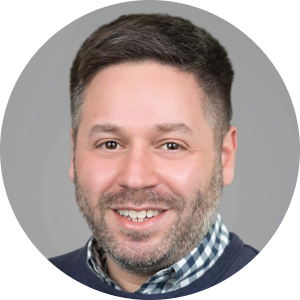
I began my career as a middle school science teacher in New York City. One of my big takeaways from that job was that every student has their own individual needs — and teachers need more help meeting those needs.

I realized the same thing when I taught 8th grade science in Oklahoma. The experience led me to become a data scientist. I wanted to build tools that make it easier for teachers to get to know their students, follow progress, and tailor their lessons.

For my part, I decided to get involved with the Summit Learning Program. At T.L.P., we’re partnering directly with teachers, and we’re co-developing the kind of one-one-on learning experiences I always wanted to give my students.

I help Andy and his team in that work. T.L.P. designs professional development programs for Summit teachers. I analyze how effective those programs are, what’s working, and how we can make Summit training even better.

That really speaks to the heart of our partnership. Tom and his team bring technical expertise to the table, but they’re deeply respectful of teacher expertise, and use their tools to enhance it.
Just 40 percent of students between grades three and eight are proficient in math. Everyone in the education community agrees that this is a problem, but most of our efforts to solve it have been scattered across individual classrooms and learning labs. Breakthroughs haven’t been shared, and successes haven’t scaled.
At least not yet. In 2018, more than 400 education leaders and 1,000 teachers offered their ideas to dramatically improve math outcomes in the U.S. The result is the EF+Math Program — an initiative to help students learn challenging math by strengthening their executive function skills. Educators, researchers, and developers will co-create new approaches to math education that are equity-focused and research-informed. CZI’s Director of Learning Science, Katrina Stevens, helps support the program. Debbra Lindo chairs its Educator Leadership Council, a diverse group of PreK-12 educators advising the EF+Math team.

I’ve spent most of my life working in schools. One of the most powerful lessons I’ve learned, through direct experience, is that every student is equally capable of mastering every subject, including math.

My experience was similar in my years working in schools. Learning scientists, like Melina Uncapher who is leading this program, are confirming this in the lab. Early evidence shows that one key to helping students excel in math education lies in helping them hone their “executive function” skills which every student already has inside them. It is what helps them focus their attention, avoid distractions, and think flexibly.

EF+Math aims to teach executive function and math in an integrated way, and to rapidly advance approaches based on what the teams are learning in real time. No one has done this before, so I’m thrilled to help educators partner with researchers and designers to pioneer it together.

We call this approach “Inclusive R&D.” Learning science can tell us a lot, but it’s teachers who have to deploy it in the classroom, which is why this project is leading with educators. Debbra brings their voices into this work and makes sure they’re heard.
All told, nearly 1,000 educators have shaped EF+Math’s development. Now the program is putting out its first requests for proposals, and we’re eager to see where they lead.
College is supposed to give every graduate a pathway to a career they love. The trouble is, many young people have trouble taking the very first step. Often, students don’t have access to networks or support. And if they don’t go to a big-name, well-resourced school, then they may not be able to see what jobs are out there, or who’s hiring.
Garrett Lord is an entrepreneur who wants to change all that. His company, Handshake, built a community that allows employers to share job openings with hundreds of universities and millions of students all at once. The technology is making more jobs accessible to more people in more places — which is why CZI’s Vivian Wu, an investor with a deep background in education, has been working with Garrett to help Handshake reach even more schools and students.

As CZI’s lead for venture investments, I always have an eye out for startups that have a powerful mission, outsize potential for growth, and strong execution. If you want to change the world for the better, you need all three.

I agree — which is why we’ve always looked for investors who are equally knowledgeable about building a business and making social impact. Vivian is one of the few who does.

Over the years, Garrett and his team have built Handshake into a thriving company. Because they’re operating at scale, they have a deep understanding of the barriers that limit students’ access to jobs — and how to break those barriers down.

One example of that work: with support from CZI, we recently launched Handshake Open. We were already reaching 14 million students, but now, any undergraduate attending a four-year university can see jobs on our network. Our goal is to democratize access to opportunity, so every student can find a meaningful job or internship.
It’s no secret that housing is becoming increasingly unaffordable in the U.S. — and nowhere is the challenge greater than the San Francisco Bay Area, where two full-time workers making $15 per hour can afford to live in just five percent of our region’s neighborhoods. The good news is that everyone who lives here agrees that we need to take decisive action. And everyone needs to make their voice heard if we’re going to find solutions that are equitable and inclusive for our entire region.
That’s why the San Francisco Foundation, CZI, and several other organizations founded the Partnership for the Bay’s Future earlier this year. The initiative is a $500 million initial commitment to preserve, protect, and produce affordable housing for Bay Area residents, with Bay Area residents. Caitlyn Fox leads CZI’s work on housing. Fred Blackwell is the CEO of the San Francisco Foundation.

The housing crisis is a question about who belongs in a place and who gets to be there. I’ve been thinking about that question my whole life, because I come from a family of community organizers. I believe all Californians deserve a place they can call home.
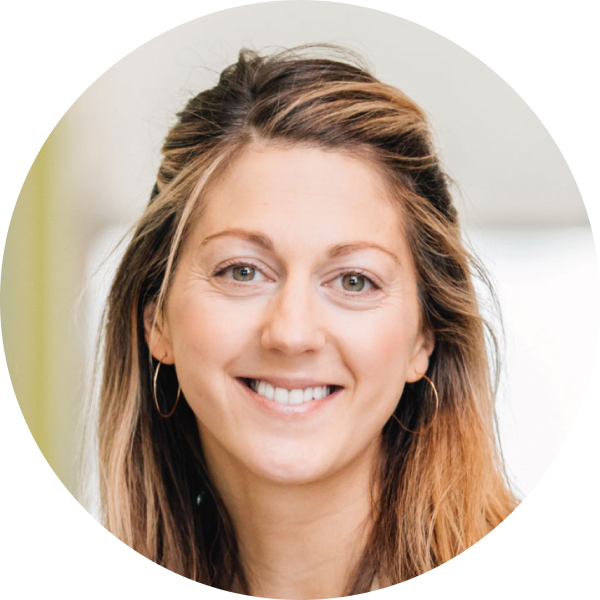
Fred and the San Francisco Foundation are deeply committed to equity. Which is why, in our first meetings, Fred and the TSFF team asked a lot of tough questions. He wanted to ensure the Partnership for the Bay’s Future would help the most vulnerable.

Caitlyn came into the conversation in a really respectful way. But at the same time, she recognized — rightly — that this moment requires urgency. We need to be bold. We need to try new and innovative things.

To us, that means empowering local leaders. They know the housing crisis inside and out, and they’ve spent decades developing solutions. Now is the time to invest in them.
The Partnership for the Bay’s Future aims to expand and protect 175,000 households homes within five years, and preserve and produce more than 8,000 homes within a decade. If you want to learn more — or get involved yourself — you can check out their website here.
In 2016, Oklahomans voted to make drug possession ineligible for prison time. Momentous as that was, it only applied moving forward, leaving behind those already serving time for the same offense.
It would have been easier to ignore the double standard, but with strong support from CZI, veteran legislator Kris Steel worked hand-in-glove with FWD.us’s Senior Director, Zoë Towns. Together, Kris, Zoë, and their organizations helped build a bipartisan coalition in support of HB 1269, the “Retroactivity Bill.” After the bill passed in April, hundreds of Oklahomans had their sentences commuted. On November 7, they got to go home.

For decades, Oklahoma’s criminal justice system has over-policed communities of color, and over-penalized low-level drug and property crimes. The result is a system that’s disproportionately biased and has one of the highest incarceration rates in the world.

In Oklahoma, incarceration isn’t just punishment. It’s a public crisis. It’s destroying our communities and dragging down our economy. Maybe the worst part is that it doesn’t even seem to be working.

We have so much work left to do on criminal justice reform. These problems are older than any of us, the system is incredibly complicated, and the scale of damage being caused is just massive. But victories like this one prove that criminal justice reform is not only possible, it’s worth it.

That kind of system failure isn’t a partisan issue. It’s not even a political issue. It’s a human issue. I’m really proud of how many different people and organizations came together to do the right thing.
By supporting bipartisan coalitions like Oklahomans for Criminal Justice Reform, we can build democratic consensus about how to fix the problems with our criminal justice system, and work together to make it happen.
More than 2.3 million Americans are incarcerated. Upwards of 100 million more live with a criminal record. Having one in three Americans caught up in the criminal justice system doesn’t mean our system is broken. In fact, it’s working exactly as designed — with incarceration as its primary tool. Throughout the 2000s, the incarceration rate rose even as crime rates fell. As Harvard sociologist Devah Pager has written, “among our nation’s most marginalized groups… [imprisonment] has now become a normal and anticipated marker in the transition to adulthood.”
Historically, the people who know the system best — currently and formerly incarcerated persons — have had little power to change it. CZI Program Manager Aly Tamboura and Dorsey Nunn, the Executive Director of Legal Services for Prisoners with Children, both have firsthand experience with the system. Aly spent more than 12 years incarcerated at San Quentin State Prison. Dorsey was sentenced to life in prison when he was 19 years old. Together, they’re working to make America’s justice system more equitable, accountable, and inclusive of directly and system-impacted voices.
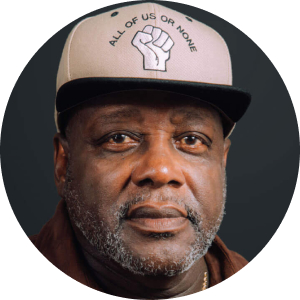
With all the stigma around incarceration, I think it’s hard for most people to accept that the real experts are those of us who’ve been inside the system. Who has a better understanding of the culture and conditions that lead to crime?
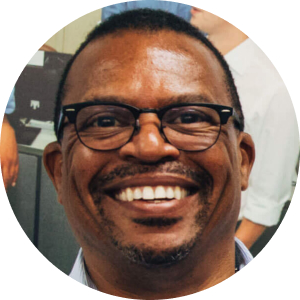
And who better to help the rest of the world see formerly incarcerated people for what they really are: people. That’s something I admire about your work at Legal Services for Prisoners with Children. You move past the statistics and soundbites, and focus on the basic human costs of the criminal justice system.

You know, when the conversation is fixed on the system as a whole, it’s easy to gloss over the specific ways it can change for the better. That’s why we take a multi-track approach to reform. We organize affected communities and reunite families. We advocate for release and raise awareness about racism in policing, the courts, and the prison system.

And in all those specific ways, you’re helping the larger reform movement flourish. The criminal justice system is so big, we really can’t fix it unless we bring everybody together: crime survivors, law enforcement, corrections, and formerly incarcerated people. Together, we can move the system past the sensationalism of crime and punishment, and redesign it to restore our communities.
Aly, Dorsey, and others are holding convenings to help organize and empower formerly incarcerated leaders, and to connect them with activists and organizations, state-based coalitions, and other system actors to collaboratively reform the criminal justice system from the inside-out.
Brian Wallach is living with amyotrophic lateral sclerosis, a terminal disease better known as ALS. Brian is also leading a movement to find a cure for ALS. And he’s been working with Tania Simoncelli, the project lead for CZI’s Rare As One Project, to help other leaders in the rare disease community do the same thing. Together, they’re creating tools and resources that will help rare disease patients connect with one another, advocate for their own needs, collaborate with researchers and clinicians — and forge a path toward new treatments.
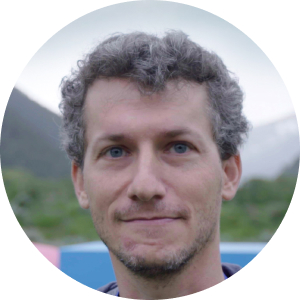
I was diagnosed with ALS in November 2017. Doctors told me I might only have months to live, and I knew I had a choice to make. Do I keep going like nothing happened? Or do I fight this thing?
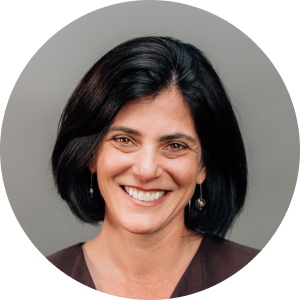
When I met Brian six months later, it was clear what choice he’d made. He was going to marshal a movement to empower patients and unite all stakeholders in the fight against ALS.

I kept thinking about what the HIV community accomplished in the ‘80s and ‘90s. They needed research and they needed treatment, so they built a movement that made HIV impossible to ignore. No one had tried that approach with ALS.

The challenge is that people living with rare diseases, and their doctors, tend to be isolated from one another, so it’s harder to organize. But technology makes it possible. I believe the tools and techniques we’re developing won’t just be a game changer for ALS patients, but for other rare disease communities, too.
These are still early days for the Rare As One Project, but it’s already led to powerful partnerships. Brian, for example, has started corresponding with Dr. David Fajgenbaum, another Rare As One partner who’s leading the fight against Castleman disease. As Tania puts it, there are 7,000 rare diseases, but together, we’re one community.
Chan Zuckerberg ID (formerly IDseq) puts the power of next-generation sequencing at the fingertips of researchers and health workers on the trail of the world’s deadliest diseases. Today, Senjuti Saha and Rebecca Egger are helping make this technology available to anyone with an internet connection.
Chan Zuckerberg (CZ ID) is an open-source, cloud-based platform developed by the Chan Zuckerberg Biohub and CZI. As the leader of the team building CZ ID, Rebecca makes CZ ID intuitive and accessible. After using the platform in her own practice, Senjuti, a microbiologist working with the largest pediatric hospital in Dhaka, Bangladesh, is putting CZ ID to work in the places it’s needed most.

As a public health worker and microbiologist, I’ve seen the ways mysterious diseases can devastate entire communities. Take meningitis. When we don’t know what’s causing it, we cannot prevent future cases. It leaves us at a standstill.

In many pediatric cases, meningitis is deadly. But even when it can be treated, it nearly always leaves the child severely disabled.

We spent years trying to identify what caused the illness. We drew spinal fluids. We ran tests, most of which failed. After learning about metagenomic sequencing, I searched around the world for people to partner with. That’s how I heard about CZ ID. I flew to California to learn how to do sequencing and try CZ ID for myself. In under a week, we discovered a major cause of meningitis in my community: a virus called chikungunya (CHIKV).

With the help of CZ ID, Senjuti was able to go back and diagnose what had caused nearly half of the 'mystery' cases of meningitis. Watching the first CHIKV samples come through at the Biohub was an ‘aha’ moment. We realized that we could have a real impact on the public health community.
As more people use this technology, we’ll be able to track more diseases as they emerge, move across borders, and develop drug resistance.
We’re proud to call the Bay Area home, and we’re committed to supporting our neighbors across the region. Through our Community team, CZI partners with local leaders and organizations to tackle the most pressing challenges facing our community.
In San Mateo County, where CZI is based, many families seeking educational and mental health services didn’t have anywhere to go. That changed five years ago when the Children’s Health Council (CHC) launched its Ravenswood Initiative, which is bringing more bilingual, culturally-relevant mental health and social emotional support services and providers to families in our community.
When CHC opened a new office in East Palo Alto earlier this year, the team received support from CZI’s Community Fund, a local, responsive grantmaking program. Moving forward, CHC’s Divier Wallace and CZI Manager Dominique Turrentine are both committed to ensuring that children and families in our local communities are connected to the services they need.

As someone who grew up in East Palo Alto during the 1990s, I know what so many of the families in my community are up against. Our students, their parents, and their teachers are facing challenges that just aren’t like the problems that come up in other communities.

Agreed. You’ve got to start with the context that makes those problems unique. When you work with people who have a deep and nuanced understanding of the community and the challenges, you have a much better chance of coming up with interventions that actually work.

That’s one thing that makes our work different than a lot of what’s been tried here before. CHC and CZI are making community-led solutions the priority. At CHC, we’re making decisions together with our community.

I remember when we first met, one of the things that stood out to me was that you and I are both Bay Area natives. For me, that’s more than just background information. I think it gives us a certain kind of fire — a sense of personal commitment to lifting up the community that raised us.
Through the Community Fund, CZI supports organizations like CHC that are on the frontlines of the most pressing needs in our local communities.
We use cookies to help us improve the site and to inform our marketing and digital content efforts. If you choose ‘Don’t Enable,’ sites you’re logged into – like Facebook and Twitter – may still be able to identify you as a visitor to this site. Learn more.


